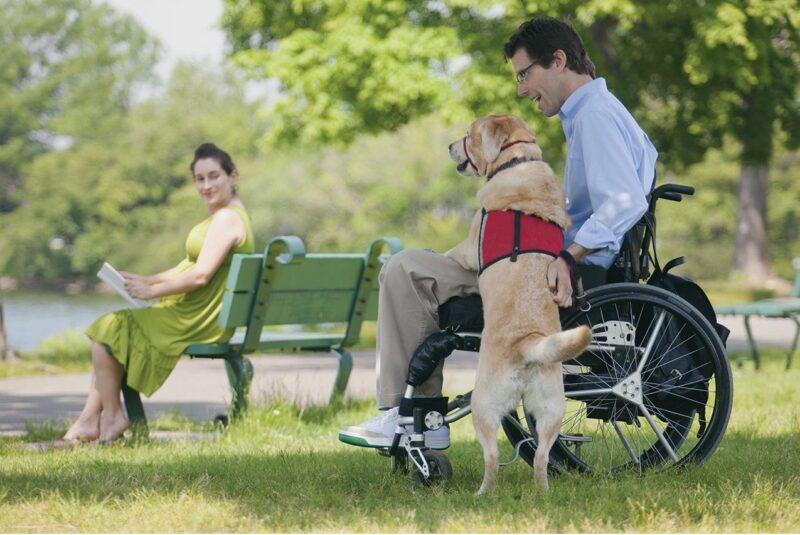Assistance dogs help people overcome myriad challenges en route to living more independently. The Americans with Disabilities Act defines service animals as dogs that are individually trained to perform tasks for the benefit of individuals with physical, sensory, psychiatric, intellectual, or other mental disabilities.
The organization Mental Health America notes that qualifying for a service dog is simple, but getting one is a little more complicated.
How does someone qualify for a service dog?
MHA notes that written documentation from a health care provider indicating that an individual is being treated for an emotional or psychiatric disorder or disability is all that’s required to qualify.
How does someone get a service dog?
Assistance Dogs International is a coalition of nonprofit organizations that raise, train and place assistance dogs. Though ADI does not directly provide, train, certify, or register individual assistance dogs or assistance dog teams, their member organizations do. Individuals seeking an assistance dog for themselves or a loved one can visit assistancedogsinternational.org to access a list of member organizations that might be able to provide them with an assistance dog. Many locally based organizations across North America can connect individuals with service dogs. The ADI points out that ‘assistance dog’ is a generic term for a guide, hearing or service dog. Dogs that are sought to provide protection, personal defense or comfort do not qualify as assistance dogs, so ADI member groups may not be able to assist people in search of such dogs.
Does insurance cover service dogs?
Service dogs are expensive, and various sources indicate that the cost of such animals can reach, and often exceeds, $20,000, which is actually on the low end of service dog estimates. In fact, Bankrate.com notes that the average cost of a service dog is between $20,000 and $60,000, a price tag that reflects the extensive training these dogs require. Because individuals typically require documentation from a health care provider to qualify for an assistance dog, that might make some believe the dogs are covered under their health insurance policies. However, that’s not the case, though there are various ways for people in need of assistance dogs to offset the cost of such animals. Some people may be able to finance the cost of a service animal, while others may be eligible for grant assistance. Various nonprofit organizations also train and match service dogs with people in need. Anyone in need of an assistance dog should explore all of their options, including contacting an organization like ADI, to learn about the many ways to offset the cost of these animals.
Assistance dogs provide an invaluable service to the people who need them. Those in need can contact the ADI or a local member organization to learn about how to begin the process of getting an assistance dog.













